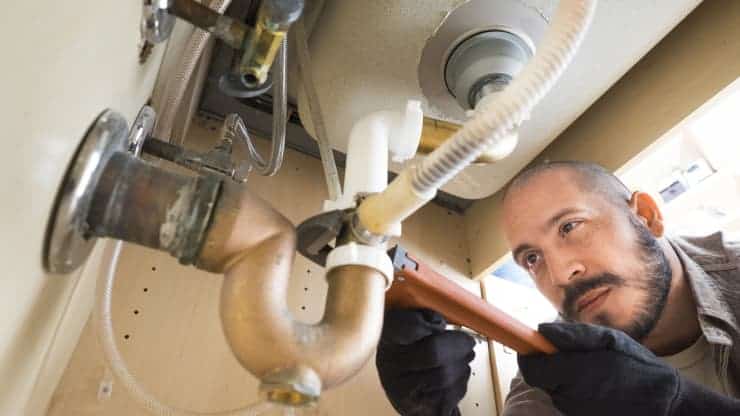Every so often, life throws us for a loop and the next thing we know, we’re left with a broken computer, an expensive traffic ticket or — in some more extreme cases — a costly home repair that needs our immediate attention.
If you’re renting an apartment, you can simply call building management and have them take care of it for you on the landlord’s dime. But when you’re a homeowner, the responsibility (and the bill) rests solely on your shoulders.
Depending on the issue, a home repair can really take your bank account by surprise. But two popular ways of covering such an expense can be to either dip into your emergency fund or take out a personal loan. The option you go with will ultimately depend on how much the repair costs, what your credit score currently is and how comfortable you are with taking on additional debt, but here are some next steps you should think about.
Consider turning to your emergency fund first
Use the money in your emergency fund before you turn to taking on more debt. Your emergency fund is meant to be used for unexpected expenses — such as a surprise home repair — so it’s totally okay to resort to that money. Plus, doing this will help you avoid going further into debt to take care of the cost. And once you do use some or most of it on the repair, you can always take steps to start rebuilding your emergency fund.
If you’ve been keeping your emergency fund in a high-yield savings account, you may be able to regrow your balance a little bit quicker thanks to the higher interest rates these accounts typically offer. Granted, the interest rate won’t get you hundreds of dollars a month, but the earnings are still higher than that of a traditional bank. According to the Federal Deposit Insurance Corporation (FDIC), the national average APY on savings accounts is only 0.07%. That’s over 10 times less than what the best high-yield savings accounts offer.
Select named the Marcus by Goldman Sachs High Yield Online Savings as the best high-yield savings account thanks to its fee-free structure (seriously, it doesn’t charge any monthly fees, excessive transaction fees or overdraft fees). You’d access your money by making transfers to an existing checking account and either paying with your debit card or heading to the ATM to withdraw cash. But if you prefer an account that simplifies the withdrawal process, the Synchrony Bank High Yield Savings account actually gives you a debit card. This way you can go to any ATM and withdraw your cash without having to make a transfer beforehand.
Use a personal loan as a last resort
If you don’t have an emergency fund or you’re uncomfortable with the possibility of obliterating your savings to fix your home, you may consider getting a personal loan to fund that expense.
Personal loans generally have lower interest rates compared to credit cards. Personal loan APRs average 9.58%, according to the Fed’s most recent data. By contrast though, the average credit card interest rate is around 16.30%, so a personal loan can sometimes be a more affordable alternative to using a credit card for a large expense unless you’re using a 0% intro APR credit card (though, keep in mind the actual interest rate you receive will depend on your credit worthiness).
And, personal loans are made for expenses like a home repair, a wedding, a funeral, a vacation or other big expense — you can typically borrow up to $100,000, but different lenders have different borrowing limits. The money will need to be repaid in fixed monthly amounts over a specified amount of time. This is known as the loan term and it varies by lender.
And, yes, you can still get approved for a personal loan if you have less than ideal credit — Upstart Personal Loans and Avant Personal Loans are two options for people with fair or good credit. The Avant Personal Loan offers funding as early as the next business day after you’re approved so you can get started patching that roof or fixing that plumbing issue as soon as possible.
Plus, taking on a personal loan — even if it’s just a small amount — may actually help improve your credit score since it can help you create a more diverse credit mix (credit mix accounts for 10% of your FICO score). Of course, the impact on your credit score will ultimately depend on your credit profile, so make sure you’re also aware of how a personal loan may result in a slightly lower credit score.
Bottom line
Ultimately, the decision might come down to how costly the repair is and how comfortable you are with taking on more debt at the moment. If you don’t want to touch your emergency savings and can afford to take on another monthly payment, you may be more inclined to the personal loan.
Remember, taking on a personal loan means you’re going to be paying interest, so you’ll end up paying more than you would if you were just to use your emergency fund. If you really don’t want to add to your existing debt, it might be a better idea to use what’s in your emergency fund.

